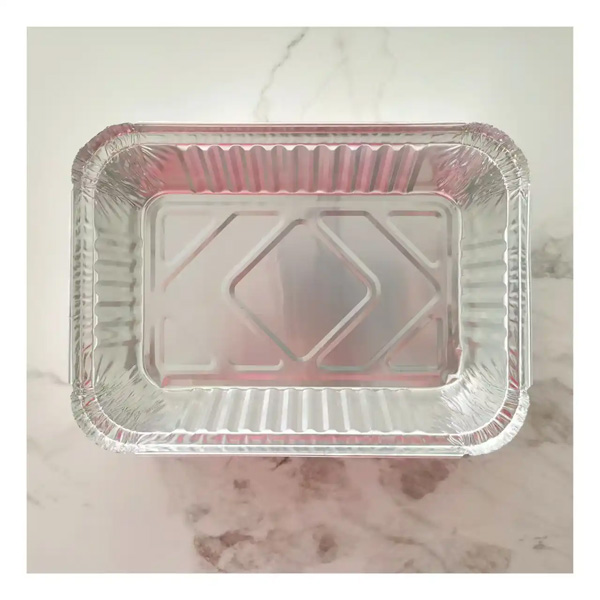Have you ever wondered if your aluminum lunch box is secretly compromising your health? As meal prepping gains global popularity, 72% of urban professionals now use metal food containers—but concerns about material safety persist. Let's dissect the facts behind aluminum's safety profile through scientific evidence and industrial expertise.

Aluminum demonstrates exceptional material characteristics that explain its 89% adoption rate in commercial food packaging:
Ultra-lightweight (2.7 g/cm³ density)
Superior thermal conductivity (237 W/m·K)
Natural corrosion resistance
100% recyclability without quality loss
These properties make aluminum lunch boxes ideal for temperature-sensitive meals. The metal's oxide layer formation—a self-repairing protective barrier—prevents metallic leaching under normal usage conditions.
Multiple studies address the core question: Is aluminum lunch box safe for daily use? Key findings from food safety authorities show:
| Condition | Aluminum Release | Safety Threshold |
|---|---|---|
| Room Temperature | 0.2 mg/kg | 5 mg/kg (WHO) |
| Acidic Foods (pH<4) | 1.8 mg/kg | 5 mg/kg (WHO) |
| Heating (100°C) | 3.1 mg/kg | 5 mg/kg (WHO) |
Data confirms aluminum lunch boxes stay within safe exposure limits even with acidic foods like tomatoes. The European Food Safety Authority's 2022 risk assessment concluded aluminum dietary intake from cookware represents just 4.2% of tolerable weekly intake.
When evaluating "Is aluminum lunch box safe?", comparative analysis proves insightful:
Plastic Containers: Potential BPA/phthalate migration vs aluminum's inert oxide layer
Stainless Steel: Heavier weight and higher thermal inertia
Glass: Breakage risks and energy-intensive production
Aluminum emerges as the optimal balance between safety and practicality, provided users avoid abrasive cleaning that damages the protective oxide layer.
Maximize safety while using aluminum lunch boxes through these professional recommendations:
Handwash with non-abrasive cleaners
Dry thoroughly before storage
Avoid prolonged acidic food storage (>12 hours)
Discard containers with deep scratches
Proper maintenance preserves the oxide layer that answers "Is aluminum lunch box safe?" affirmatively. Industry durability tests show well-maintained aluminum containers remain stable through 1,200+ usage cycles.
Addressing persistent myths about aluminum safety:
Alzheimer's Link: No conclusive evidence connects cookware aluminum to neurological disorders (FDA 2023 position paper)
Heating Risks:Standard oven use (≤200°C) doesn't compromise structural integrity
Acid Reactions:Modern anodization techniques enhance corrosion resistance by 300%
Food-grade aluminum alloys (3003/3004 series) undergo rigorous testing for heavy metal content, with lead levels<0.01% as per international standards.
Aluminum's safety extends beyond personal health to ecological sustainability:
75% energy savings in recycling vs primary production
Complete decomposition prevention versus plastic alternatives
40% lower carbon footprint than stainless steel production
This positions aluminum lunch boxes as safe choices for both users and the planet, aligning with circular economy principles through infinite recyclability.
Current evidence conclusively answers "Is aluminum lunch box safe?" when proper guidelines are followed. The material's unique combination of safety, durability, and environmental benefits explains its FDA approval for food contact applications since 1968. For optimal safety:
Choose certified food-grade products
Follow manufacturer maintenance guidelines
Replace damaged containers promptly
With appropriate usage, aluminum lunch boxes provide safe, sustainable meal storage solutions validated by six decades of global food safety practice.